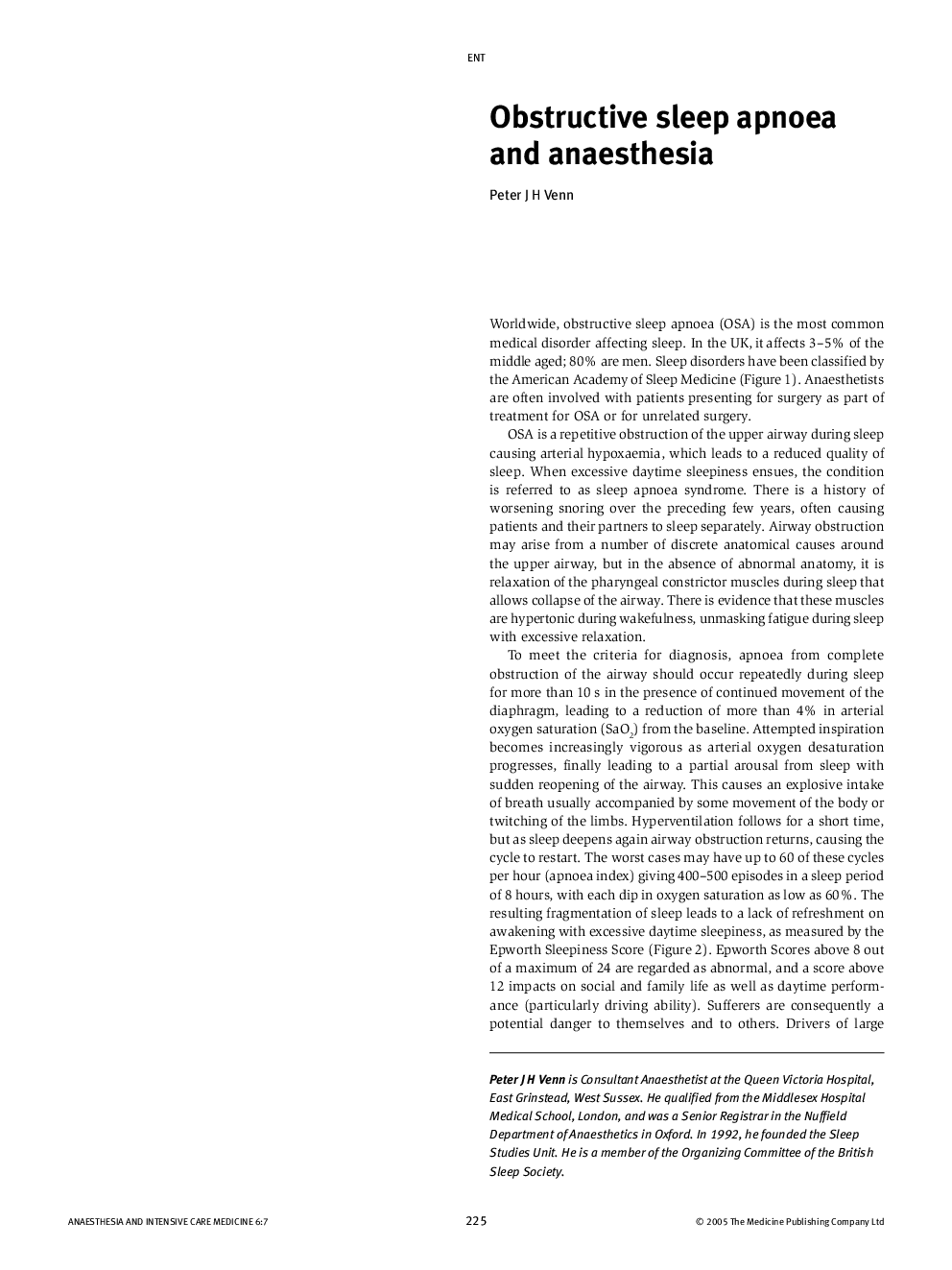| Article ID | Journal | Published Year | Pages | File Type |
|---|---|---|---|---|
| 9089523 | Anaesthesia & Intensive Care Medicine | 2005 | 5 Pages |
Abstract
Obstructive sleep apnoea (OSA) is a common condition affecting about 3% of the middle aged. It is more common in men with a history of snoring. Patients have sleep disruption from repetitive obstruction to the upper airway during sleep. Medical consequences include hypertension and type 2 diabetes, which predispose to cardiovascular disease. Sleep disruption causes excessive daytime sleepiness, and patients may be a danger to themselves or others, especially when driving. Anaesthetists commonly encounter the condition, and should have a high index of suspicion when assessing overweight, middle-aged patients for surgery. Patients may present for ENT or maxillofacial surgery as part of the management of OSA; but those at greatest risk are patients in whom the condition is undiagnosed and unrecognized and who present for surgery for an unrelated condition. Difficulty with intubation is common, and airway obstruction may occur under anaesthesia if opiate and sedative drugs are used without caution. Many patients also suffer from acid reflux, which may cause problems during induction of anaesthesia. A plan for difficult airway management is essential, and consideration should be given to carrying out an awake intubation under topical anaesthesia of the upper airway. Anaesthetists must know how to administer nasal continuous positive airway pressure; and all staff should be experienced in the management of patients with OSA during the perioperative period.
Related Topics
Health Sciences
Medicine and Dentistry
Anesthesiology and Pain Medicine
Authors
Peter JH Venn,
